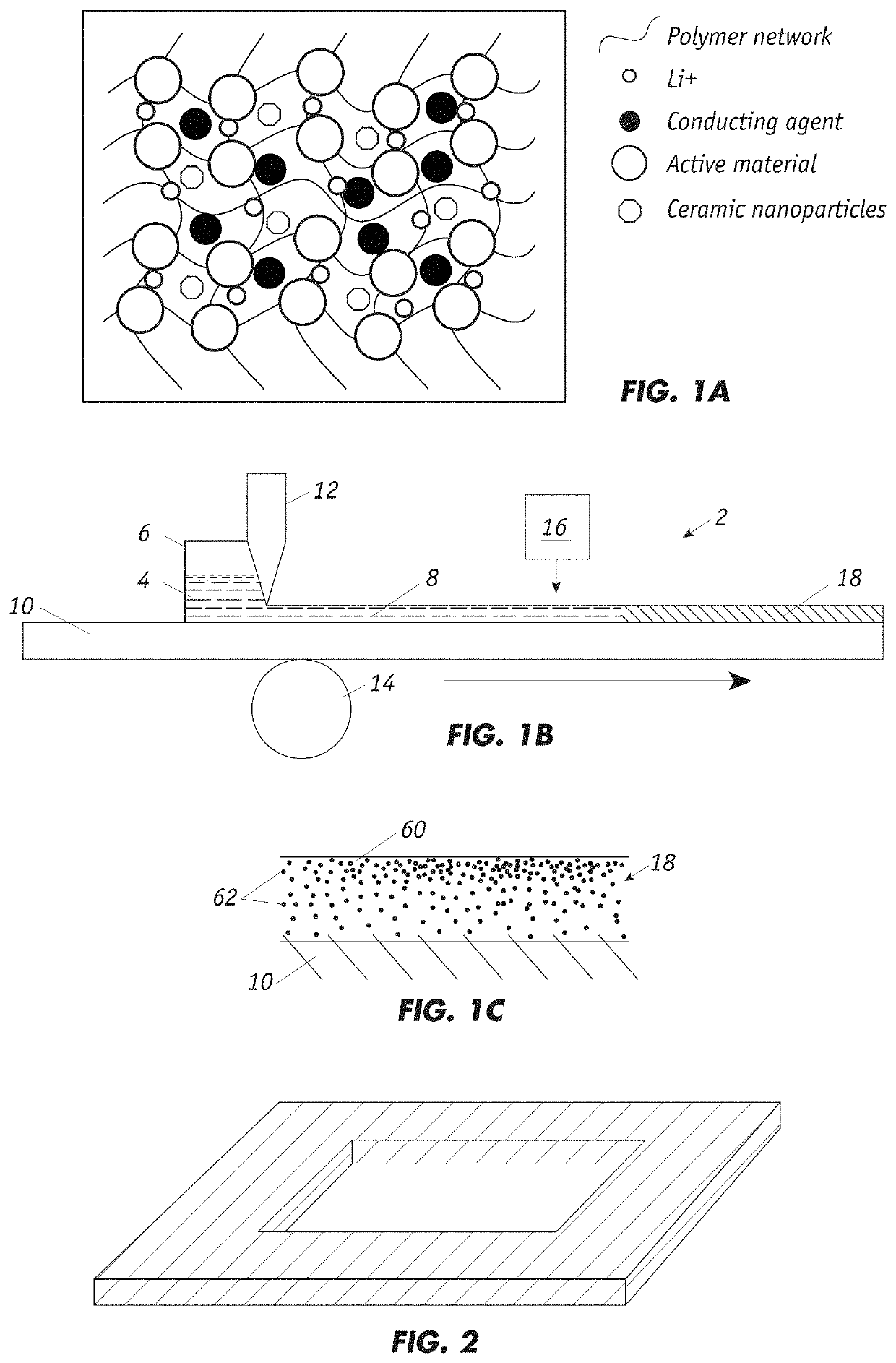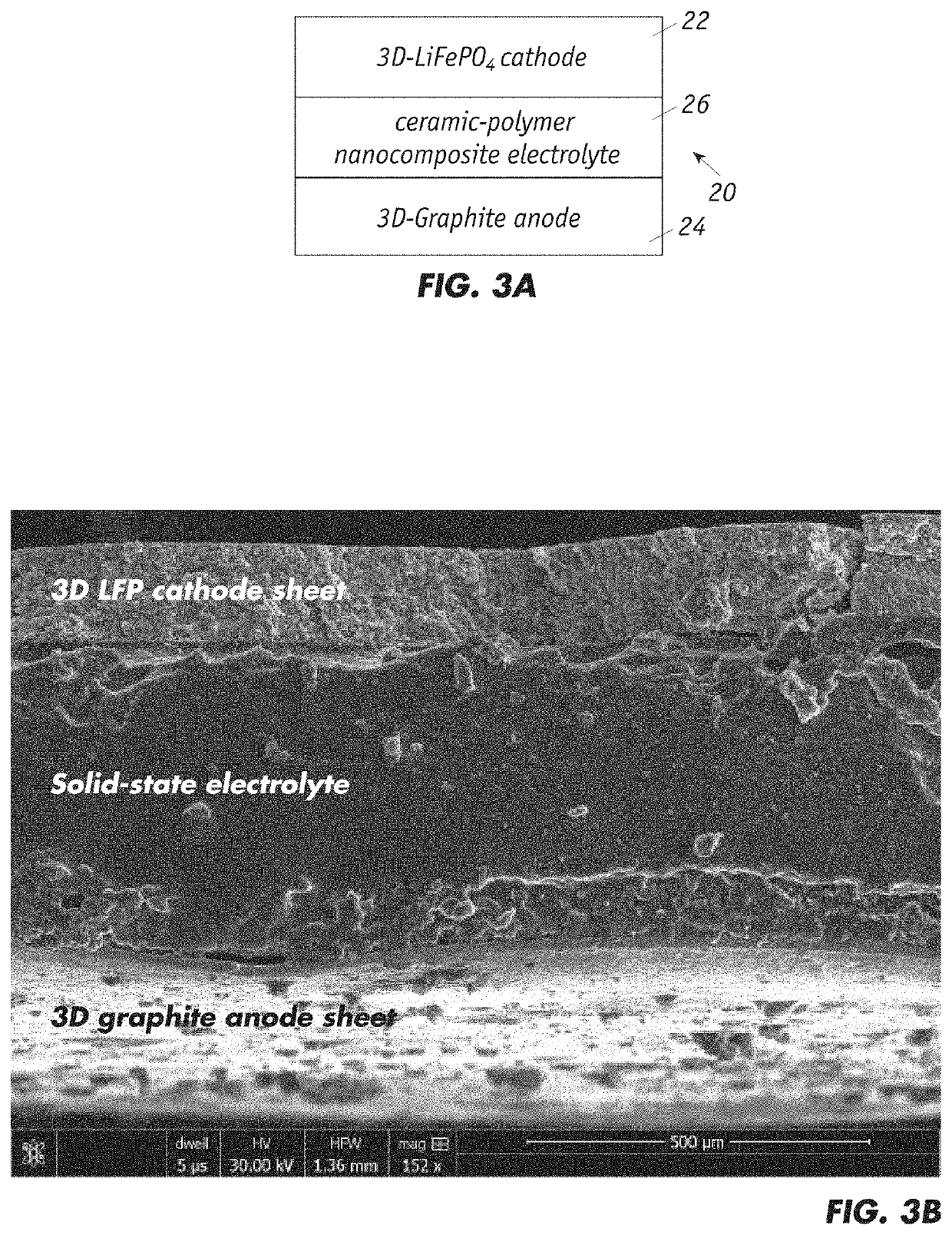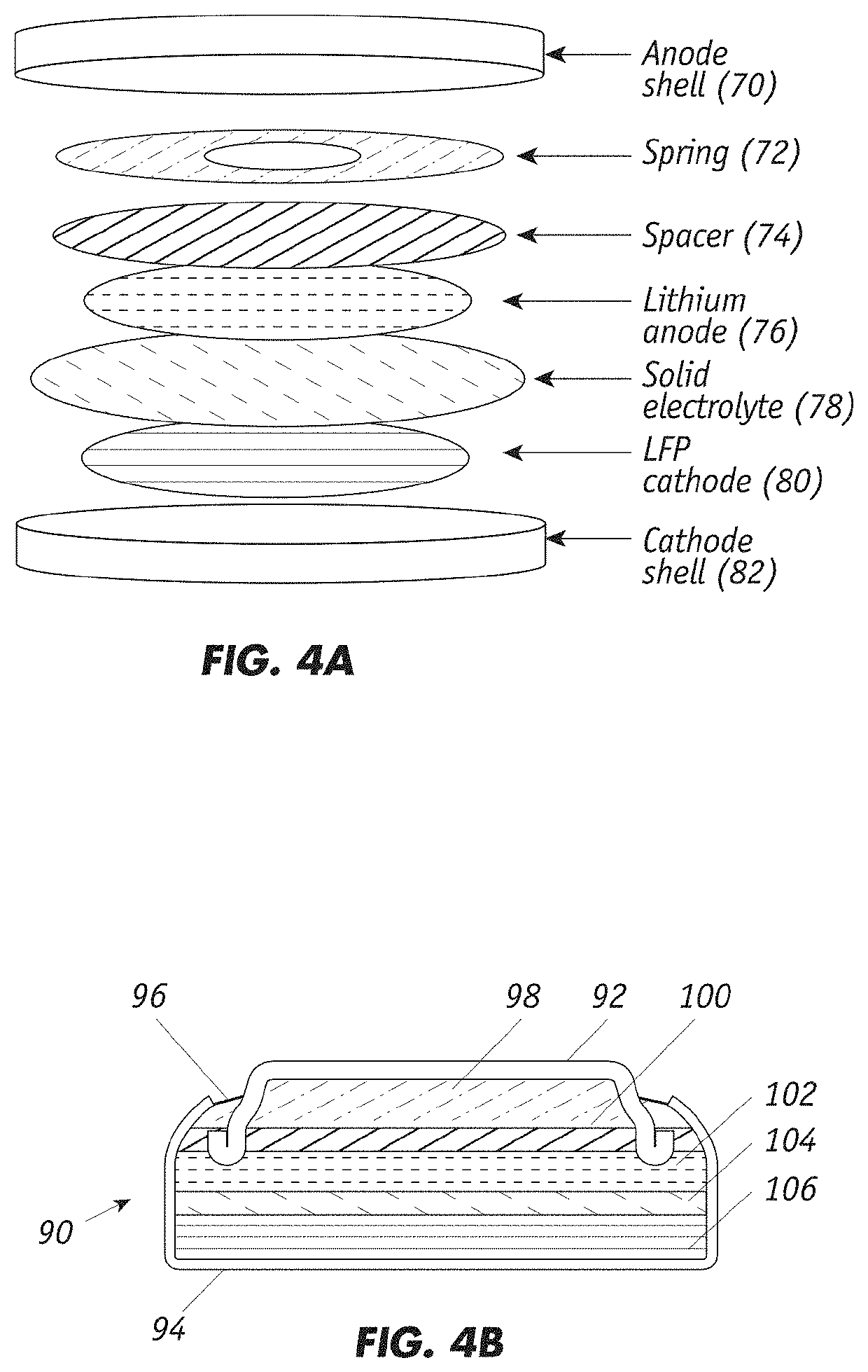All Solid-State Lithium-Ion Battery Produced by Pressure-Aided Co-Curing
a lithium-ion battery, pressure-aided co-curing technology, applied in the manufacture of final products, cell components, electrochemical generators, etc., to achieve the effects of excellent rate performance, outstanding stability, and elimination of pores
- Summary
- Abstract
- Description
- Claims
- Application Information
AI Technical Summary
Benefits of technology
Problems solved by technology
Method used
Image
Examples
Embodiment Construction
[0030]This invention is directed to solid-state lithium-ion batteries based on ceramic-polymer electrolyte infiltrated composite electrodes (cathodes and anodes) that are particularly suited for used in lithium-ion electrochemical cells and batteries. The electrode has a polymer-based electrolyte forming a 3 dimensional-like networking structure in which (1) active materials (cathode or anode), (2) conducting agent, and (3) lithium salt and (4) ceramic nanoparticles are homogeneously distributed throughout the network. The electrode can include a plasticizer and a binder, if required.
[0031]The active materials for anodes include any compatible anodic material which functions as an anode in solid lithium-ion electrochemical cells. Preferred anode active materials are graphite based and silicon-based materials.
[0032]The active materials for cathodes include any compatible cathodic material which functions as a positive pole in a solid lithium electrochemical cell. Preferred cathode ac...
PUM
| Property | Measurement | Unit |
|---|---|---|
| pressure | aaaaa | aaaaa |
| temperature | aaaaa | aaaaa |
| diameters | aaaaa | aaaaa |
Abstract
Description
Claims
Application Information
 Login to View More
Login to View More - R&D
- Intellectual Property
- Life Sciences
- Materials
- Tech Scout
- Unparalleled Data Quality
- Higher Quality Content
- 60% Fewer Hallucinations
Browse by: Latest US Patents, China's latest patents, Technical Efficacy Thesaurus, Application Domain, Technology Topic, Popular Technical Reports.
© 2025 PatSnap. All rights reserved.Legal|Privacy policy|Modern Slavery Act Transparency Statement|Sitemap|About US| Contact US: help@patsnap.com



